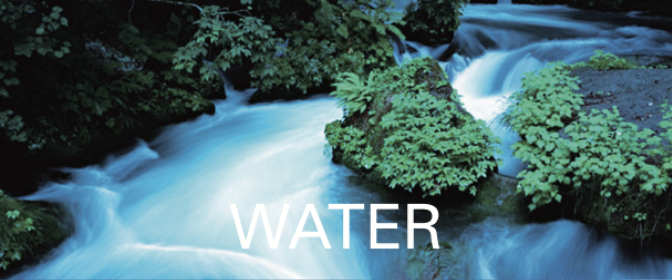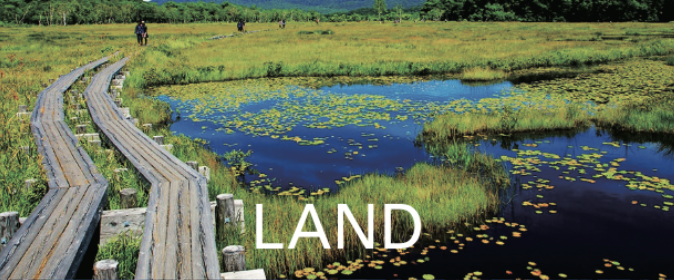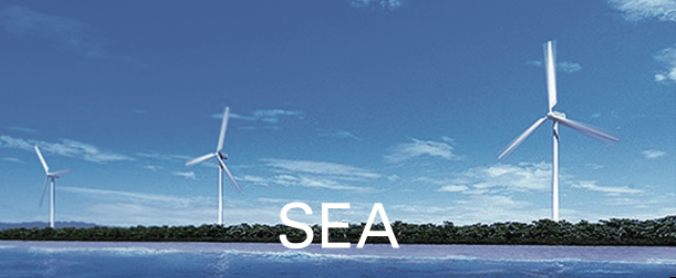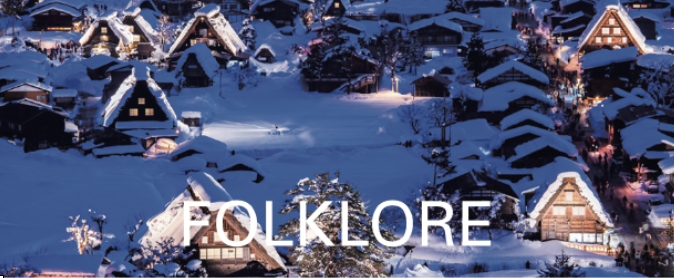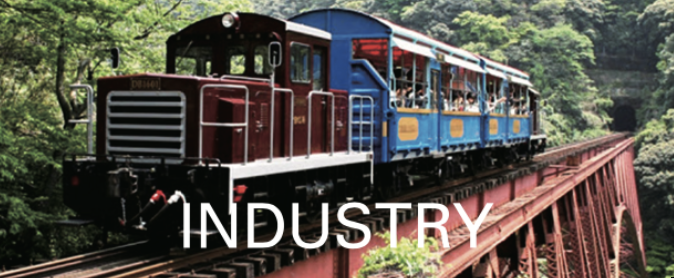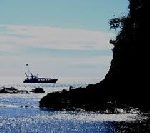
Tainoura – the coast of sea bream, is a shallow sea of 10 to 30 m. Sea breams form groups, which normally live in rocks and gravel at a depth of 30 to 150 m. This phenomenon has not been scientifically proven. The sea bream here is related to the birth of Nichiren (1222 – 1282), the founder of Nichiren sect.
The fish have been fed and protected by local people since the Kamakura period (1185 – 1333). Throughout the year, when you hit the side of a sightseeing boat and make a sound, the groups of sea breams will come near the surface of the water.
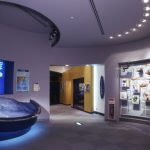
The Museum speaks the seas. Tokyo Bay on the north side of Futtsu cape is a sea of tidal flats, where the river water grows lives. Uchibo, the sea between Futtsu cape and Sunosaki cape, in the west Boso Peninsula, is a warm sea where coral reefs also inhabit, under the influence of the Kuroshio, the Japan current.
The sea of Sotobo, in the east Boso Peninsula, from Sunosaki cape to Taito cape, is a place where tides move smoothly and the large seaweed Kajime, Ecklonia cava becomes the fish’s home. Kujukurihama is one of Japan’s leading sandy beaches with a sandy bottom in the sea.
Natural features surrounding the museum are also incorporated as part of the museum. A variety of outdoor events are also available.
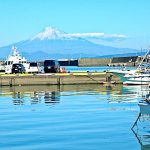
Yaizu is said to be the place where Yamatotakeru no mikoto, a legendary Japanese prince of the Yamato Dynasty, and the son of Emperor Keiko, set his enemy on fire, by their own attack, while overtaking the eastern areas, by order of the Emperor. You can see closely Mt.Fuji and the Izu Peninsula over Suruga Bay, from the Kogawa Port.
About a million years ago, the Izu Peninsula, on the Philippine Sea Plate, collided with Honshu Island, which created Suruga Bay. Eventually, Mt. Fuji was born.
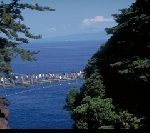
Nichiren wrote ” Rissho Ankoku ron, the Treatise for Spreading Peace Throughout the Country by Establishing the True Teaching”, in 1260, when it was in the midst of natural disasters, in the Kamakura period (1185 – 1333). He presented it to Hojo Tokiyori (1227 – 1263) the 5th Shikken, the Regent of the Kamakura Shogunate, to review the national politics, and was exiled to Izu Peninsula. This coast was the place where Nichiren disembarked, which was created from Mt. Omuroyama, a volcano on the Izu Plateau.
This coast is rich in seafood and has a variety of natural modeling beauty, such as steep cliffs and the cape of flowing lava. The terraced fields of Jogasaki Flower Garden contrast with the sculptural beauty of the cape.

The view of Mt. Fuji from this coast is like a painting. The name of this place, Toi, is said to originate from the Ainu word Topi, meaning “wonderful land.” There are sites from the middle of the Jomon period (16,000 years ago – 3,000 years ago), and there is an ancient memory. On this coastal walk, you can encounter the scenery that has been beloved for over 5,000 years.
There are monuments inscribed with a poem and sculptures by the artists related to Toi, such as Wakayama Bokusui (1885 – 1928), a Japanese poet, and Shimaki Akahiko (1876 – 1926), a Japanese poet, in the pine forest of Matsubara Park. There is a history that the beautiful superb views of the sea and the sunset have been engraved in the heart of a person.
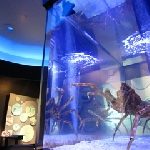
Yaizu Port on the west coast of Suruga Bay is a fishing port that represents Japan by landing tuna and bonito. Suruga Bay is curved so that the Pacific Ocean enters toward Mt. Fuji, which was created when the Izu Peninsula on the Philippine Sea Plate collided with Honshu Island, about 1 million years ago.
At this museum in the fishing port, you can enjoy learning about the deep sea of Suruga Bay with images and panels, which, at 2,500m, is the deepest sea in Japan.
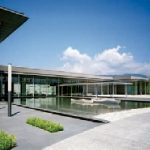
“The Islands sunk down and floated up ” -7 million years ago, this area was connected to the Pacific Ocean via the ancient Fuji River channel, shown by the fossil of the rocky outcrop. The Jomon settlement near here, 5,000 ‒ 4,000 years ago, was connected to the Ocean through the present Fuji River, shown by the unglazed earthenware with patterns.
The fossil of the rocky outcrop, displayed beside the main gate of the museum, was excavated from the ancient Fuji River channel along the Fuji River about 7 million years ago. It indicates that whales, sharks, and sardines lived in the channel, and shellfish and sea urchins lived on the coast.

Abukuma Cave, which rose up from the sea over 80 million years ago, is located at the foot of the Abukuma Highlands, which runs north to south on the east side of Fukushima Prefecture. Inside the cave, with a total length of about 600m, stalactites that dramatically hang from the ceiling and stalagmites that accumulate from under the floor are constantly changing. They are the beauty that groundwater creates, which is a masterpiece. Memories of the ancient seabed remain here. You should watch “Tsuki no Sekai, -the Moon World,” which features a light control system for stage productions.

